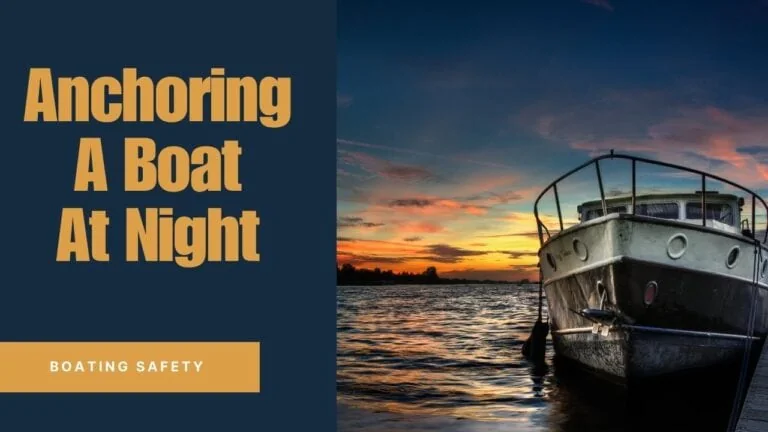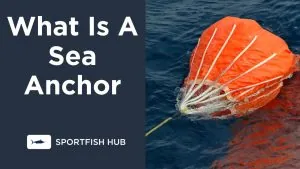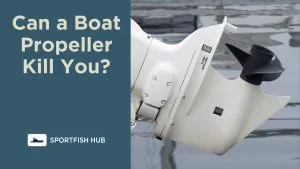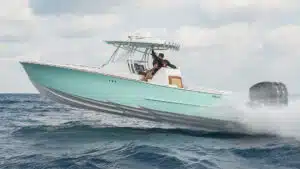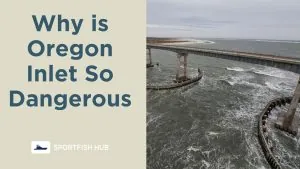In this comprehensive guide, I will cover everything you need to know about anchoring a boat overnight.
I will discuss types of anchors, how to choose the perfect spot, step-by-step anchoring procedures, setting up safety measures like anchor alarms, and tips to avoid common anchoring mistakes.
Follow these best practices and you can sleep soundly knowing your boat is safely anchored for the night.
Why Proper Anchoring is Crucial
When anchoring overnight, a lot can happen over the span of several hours. Winds and currents may shift, other boats may come and go, or your anchor could fail to set properly. Without taking the right precautions, you risk your boat dragging its anchor or even breaking loose completely.
Potential consequences of improper anchoring include:
- Colliding with other boats, docks, or objects
- Running aground in shallow water
- Equipment damage from impact or dragging
- Sinking due to taking on water
Clearly, anchoring failure can quickly become a dangerous and expensive boating emergency. Taking the time to anchor correctly will give you peace of mind and prevent disasters.
Types of Anchors for Overnight Anchoring
For overnight anchoring, the most suitable anchor types are:
Fluke Anchors
Fluke anchors, like the Danforth, have wide flat blades that dig into the seabed. The sharp points and large surface area provide excellent holding power. They perform well in most bottom conditions, including sand, mud, and clay.
Pros: Strong holding power, versatile Cons: Can break loose in very hard or slippery bottoms
Plow Anchors
As the name suggests, plow anchors look like a farmer’s plow. The heavy shank and thick curved blades provide fantastic holding in sandy and rocky bottoms.
Pros: Great for sand and rocks, easy to set Cons: Not ideal for soft mud or grass
Mushroom Anchors
Mushroom anchors work by settling into the seabed. Their shape allows sediment to bury the anchor. Best for very soft bottoms like mud and silt.
Pros: Self-burying, good for soft mud Cons: Not enough holding power for overnight
For most situations, a fluke or plow anchor around 10-15% of your boat’s weight provides ideal overnight holding.
Choosing the Perfect Anchoring Spot
Selecting the right location is critical for secure overnight anchoring. Ideal spots have:
- Protection from expected winds and waves
- Good holding ground seabed like sand, mud, or clay
- Enough swinging room and anchor clearance
- Low boat traffic to reduce collisions
Scope out potential spots during daylight using nautical charts and guides. Check weather forecasts to avoid exposure to storms or shifting winds overnight. Anchoring in unsuitable, high-traffic, or crowded spots is asking for trouble.
Pay attention to water depth and calculate the scope you need. Anchor in depths appropriate for your rode length. Avoid anchoring near hazards like shoals, docks, or over pipelines/cables.
Take note of bottom conditions if possible. Sand, mud, and clay are preferable. Avoid grassy, rocky, or hard bottoms which could prevent the anchor from setting properly.
Step-by-Step Guide to Anchoring Your Boat
Follow these steps when anchoring for an overnight stay:
1. Prepare Your Boat
- Ready the anchor and rode at the bow
- Attach tripping line and buoy for easy retrieval
- Calculate required scope based on conditions
- Turn on anchoring/navigation lights
2. Navigate to the Location
- Approach your pre-selected anchoring spot slowly
- Position the boat upwind/upcurrent of spot if possible
3. Drop the Anchor
- Lower anchor slowly under control to the bottom
- Allow chain to stack without piling to ensure proper set
4. Confirm Anchor Hold
- Back down hard in reverse to test anchor hold
- If anchor drags, repeat setting process
- Check boat’s position with landmarks and GPS
Use 3:1 minimum scope in calm weather, 7:1 or more in rougher conditions or high currents. Always back down hard to confirm anchor hold before leaving it for the night.
Setting Up Safety Measures
To ensure peace of mind overnight, establish the following safety measures:
| Safety Measure | Description |
|---|---|
| Anchor Alarms | Use apps or onboard equipment to set anchor drag radius alarms. This will alert you if the boat drifts outside a set area. |
| Emergency Plans | Have a plan to quickly raise the anchor and move the boat in case of emergencies or anchor failure. |
| Proper Lighting | Display the correct navigation lights and anchor lights to maintain visibility for other vessels. |
| Monitoring | Take shifts checking on the boat’s position and the weather conditions throughout the night. |
| AIS | Keep your AIS transponder on to increase your visibility to other boats. |
Additional Tips for Safe Overnight Anchoring
- Check weather forecast before anchoring – avoid exposure to storms
- Understand local seabed conditions that could impact holding
- Use adequate chain length and scope for expected winds/current
- Set multiple anchors if necessary for added redundancy
- Keep equipment in good condition and replace weak/worn ground tackle
- Avoid anchoring in crowded areas with limited swing room
- Be prepared to re-anchor if conditions change or anchor drags
Common Mistakes to Avoid
Many overnight anchoring mishaps can be avoided by steering clear of these errors:
- Not setting any anchor alarms as a backup
- Anchoring in an exposed area with potential for shifting winds or waves
- Using inadequate scope for water depth and conditions
- Failure to confirm anchor is deeply set before leaving it overnight
- Not using enough chain length between anchor and rode
- Choosing poor holding ground like grass or rock ledges
- Not displaying proper night anchor lighting
Avoid these mistakes and use good seamanship for a worry-free night at anchor!
Frequently Asked Questions
How much scope should you use when anchoring overnight?
Use a minimum of 7:1 scope in calm conditions. In high winds or currents, increase scope to 10:1 or more. Having enough scope prevents excessive strain on the anchor.
What is the most secure anchor type for overnight anchoring?
Fluke and plow anchors provide the best holding power. The thick blades dig into the bottom for secure overnight anchoring. Mushroom anchors should only be used for very lightweight boats.
How often should you check on the boat at night when anchored?
Check at minimum every 1-2 hours throughout the night. Monitor boat position, anchor line tension, and weather changes. Frequent checking ensures anchor integrity overnight.
Conclusion
Anchoring a boat securely through the night is crucial for safety and avoiding disastrous anchor failure. Follow the recommendations in this guide to choose a suitable spot, properly set your ground tackle, establish redundancy with alarms and lighting, and monitor the conditions closely. Practicing cautious seamanship will lead to peaceful nights at anchor.
Let us know if you have any other anchoring tips in the comments! And don’t forget to share this guide with fellow boaters to promote safe overnight anchoring.

